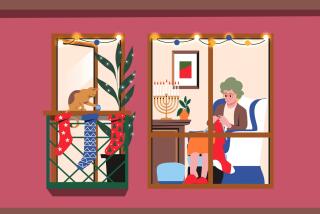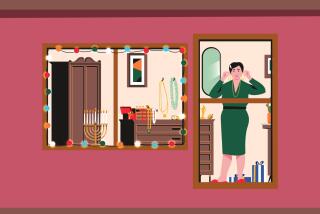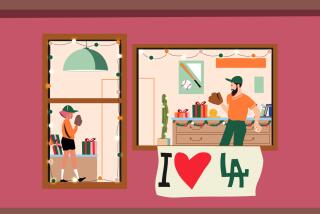Study Is First Step to Indian Jewelry
Question: We were planning a tour of the Southwest and may stop at some Indian reservations. What tips can you offer on Indian jewelry collectibles?--B.E.
Answer: Check with the locals and/or the people at your hotel to make sure you’re buying from a reputable dealer. Reliable dealers vouch for a stone’s authenticity, for example.
Do a little reading before you hit the road. Acquaint yourself with the work of the Hopi and the Navajo.
Other than jewelry, know what to look for in pottery, rugs and kachinas. Make sure you’re buying a well-formed pot that’s free of cracks. Check a Navajo rug’s weave to make sure it is tight and that the edges are straight. Look for the artist’s name on a Hopi kachina, because the name can enhance the doll’s value.
“In shopping for any Indian art,” an Arizona dealer said, “ask yourself if the piece has an Indian ‘feeling.’ The more you are around Indian art, the more readily you will recognize this.
“In the final analysis, Indian art is like all art. It is a personal thing. Your own feelings should be your strongest guide.”
Q: When did the first Tootsietoys go on the American market with that name?--C.N.
A: Samuel Dowst, a Chicago publisher, adapted the Linotype machine to making promotional miniatures following the Columbian Exposition of 1893 in that city. Soon, he was hooked on the die-casting business and left publishing to pursue a new fortune.
By the early 1920s, Dowst had produced a bunch of miniatures of autos, trains and aircraft. Then, in 1922, his firm manufactured a line of doll furniture that bore the trade name Tootsietoy--appropriately named after his daughter, Tootsie Dowst. Ultimately, the firm changed its name to the Strombecker Corp.
Aside from its metal toy products that became so popular with collectors, the company’s claim to fame was that it also produced the metal marker pieces used in the game Monopoly.
Olympic pins and Olympic memorabilia have a big following. Pin-collecting fever picked up lots of steam, of course, during the 1984 Olympics here. Before that, it was confined largely to a sparse number of serious collectors in this country, although thousands of Europeans and Asians had been in the pin collecting game for years.
Now, there are pin-collecting shows, clubs and conventions all across the United States. And corporate America has caught on to the public relations value of their products on thousands of lapels or being exhibited at collectors shows.
We’re telling you this as an introduction to the Olympic Collectors Newsletter, produced by Bill Nelson, a former marketing executive and teacher who resides in Arizona. The well-written, four-page newsletter is mailed monthly and costs $6 a year.
However, Bill says Your Collectibles readers can obtain a six-month free subscription if they request one in a letter to Bill Nelson, P.O. Box 41630, Tucson, Ariz. 85717.
Bill told us during a recent telephone chat that each issue offers at least two addresses of countries that send out free Olympic pins, usually because they’re trying to promote themselves as hosts for future summer and winter games.
For example, with the selection of the site for the 1992 games looming this fall, he says in his July and August newsletters that both Australia and France are sending out complimentary pins to promote their respective causes.
Date Book
Sunday--Fourth Annual Railroad Collector’s Show and Sale, 9 a.m. to 3 p.m., Holiday Inn, 7000 Beach Blvd., Buena Park. Donation $2.50. For information, call (714) 735-0677.
Ronald L. Soble cannot answer mail personally but will respond in this column to questions of general interest about collectibles. Do not telephone. Write to Your Collectibles, You section, The Times, Times Mirror Square, Los Angeles 90053.
More to Read
Sign up for The Wild
We’ll help you find the best places to hike, bike and run, as well as the perfect silent spots for meditation and yoga.
You may occasionally receive promotional content from the Los Angeles Times.






